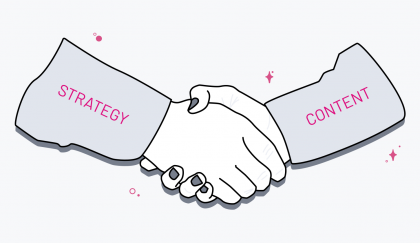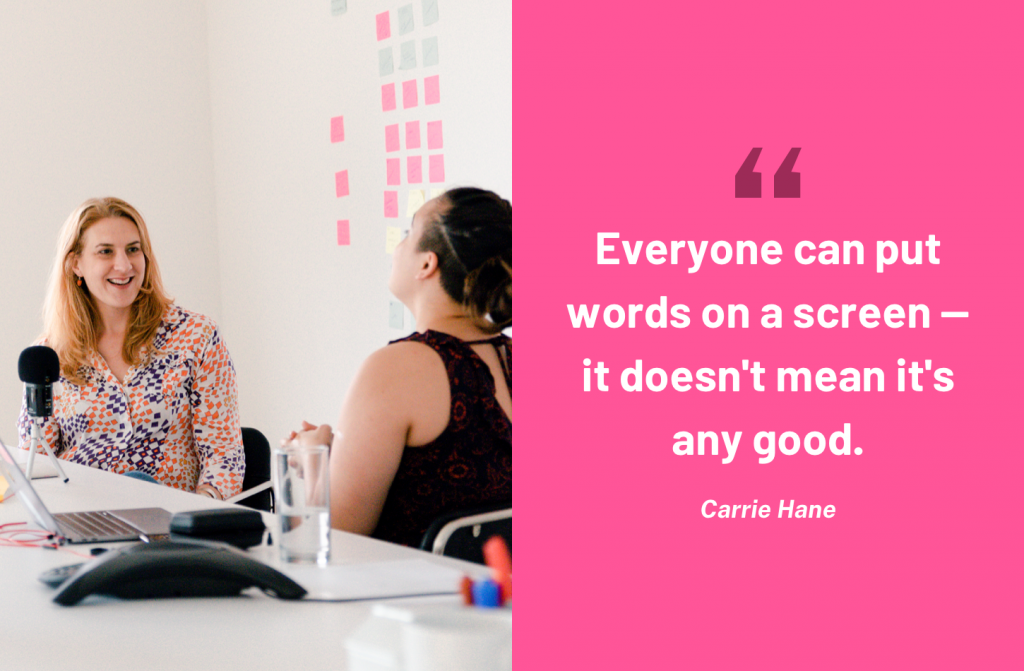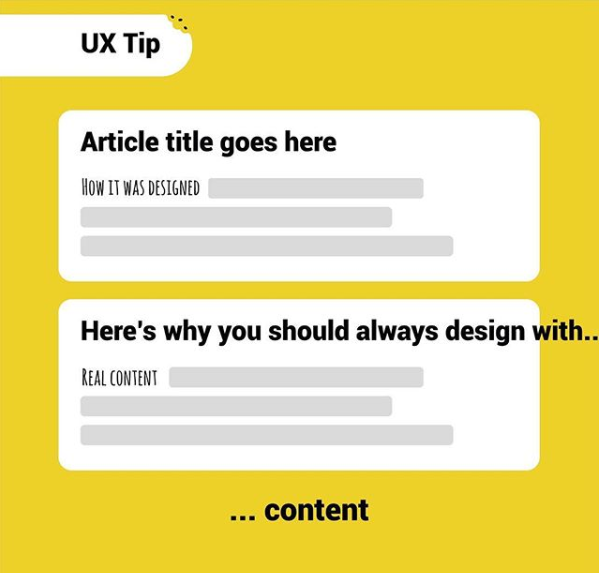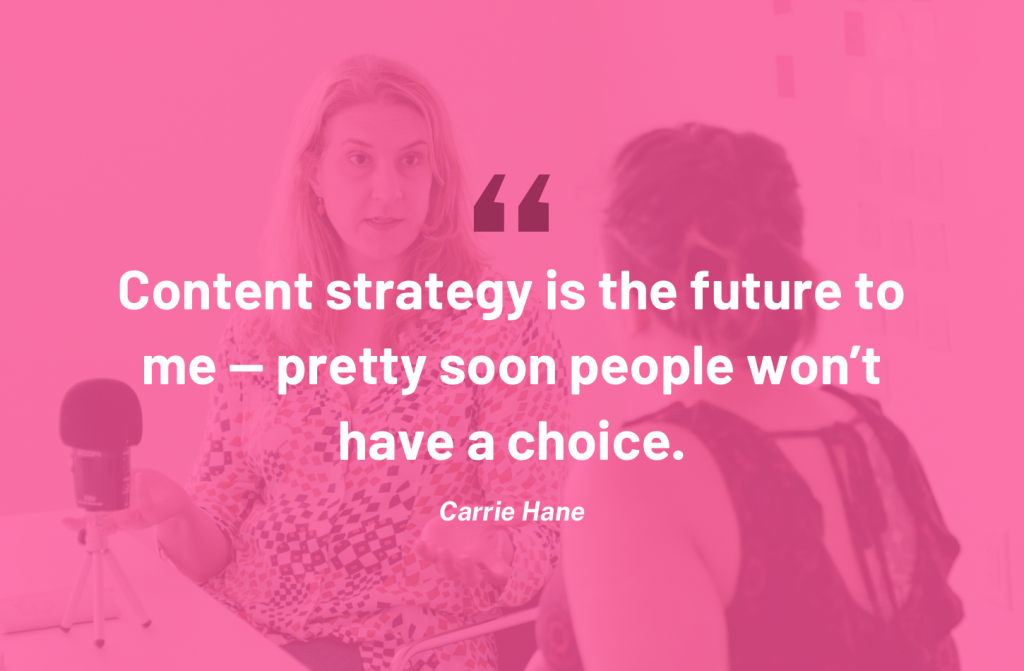Content Strategy: Why Don’t You Have It?

In our latest Feedback episode, Carrie Hane — consultant at Tanzen LLC — details what content strategy is exactly, why no one understands it, and why everyone needs it. Carrie acknowledges that telling someone you’re a content strategist is like admitting you’re part of a cult. Or that there should be a support group: Content Strategists Anonymous.
Content, Meet Strategy
The job of content strategist entails helping people and organizations create more effective content more consistently. This involves having the right information in the right format to suit your audience’s needs. This task is not a one-off, though. It requires setting up processes with staying power. It means training the teams you’re helping, so they can keep creating impacting content long after you’ve left. In other words, educate them. Give someone content, they’ll post for a day. Teach someone the right strategy, they’ll have content for life.
What’s content? Substantive information that’s published on a medium. Whereas a digital marketer’s focus is on getting someone’s attention, on sales, on getting audiences through the door, real content is there to make sure audiences stay. Marketing remains, ‘the thing about the thing’ — content strategy would cover all of the things those marketers are talking about — publications, events, newsletters, etc.
Everyone needs content strategy; not everyone does it.
Strategizing content is not necessarily the same as making it — creating content means writing, messaging, branding, et al. But the strategy remains the plan for creating the right content. A lot of organizations throw some words on a website and then congratulate themselves. It takes up space. It’s there. But it doesn’t mean people will find it. It doesn’t mean people will want to find it. And trust me, you want them to find it.

Change the Culture
In order for any of this to happen, you’re going to need top-level support from the office — not just a half-hearted buy-in of, “Yeah, do that content strategy stuff.” You need the authority to advocate/enforce the strategy and to ensure everyone’s on the same wavelength. Because inevitably, people will not agree. Everyone’s cool with content strategy until you say, “Okay, we need to get rid of these pages.” It’s necessary to have a collaborative, supportive culture for this kind of change to take hold.
At some point as a content strategist, you always end up playing therapist.
The biggest pushback with content strategy — or anything new — is always the fear of change that’s intrinsically human. Teams have to talk to this out. It will take listening. It will take empathy. Sometimes you just ask the right questions: “Who’s gonna blog? How often are you gonna blog? Is that really something you can do?” These basic queries about content entry/editorial calendars go a long way to manage clients’ expectations.
First, Content
Content isn’t something you fill in the boxes for — or with. Content-first should mean starting with:
- “What content do we need to fulfill our users’ needs?”
- “How will this content fulfill those needs?”
- “Does this align with our brand and mission?”

Content-first is also more of a design process. So when you are talking about designing something — a digital product, a website — you’re starting with thinking about the content before the layout. What kind of content do you need? How are you going to organize it? How are you going to structure it? Then building the interface. You want to build around content, not the other way around.
Ideal Content Strategy
- User Research: a base understanding of who they are, what content they want, and how they want it.
- Know Your Brand: beyond a visual identity, who are you? what do you do? what do you stand for?
- Domain Model: figure out what world of subject matter you live in and which types of content would be appropriate, along with how they’d relate to each other.
- Content Architecture: what is your message? what are you trying to say exactly and how are you saying it?
If You’re Not First, You’re —
When you do content-last, the project is late/over-budget, the content isn’t good, and you end up with ostensibly the same website — just randomly reorganized. But it’s not any better. The design may be fresh for a while, but then there’s no plan on how to maintain or grow it.
All types of organizations could benefit from embracing this new model — particularly nonprofits. So many nonprofits just adopt an onslaught of digital campaigns at high volume, sending out as many emails and solicitations as possible. This myopic marketing isn’t the most effective way to entice users to give you money. There are lots of reasons that people do or don’t donate — but to understand your audiences better and then implement a sound content strategy around that research would boost brand building and donation flow.

For anyone in digital, it’s now riskier not to have a content strategy. It’s riskier not to change. In business as in life, if you keep doing things the way you’ve been doing them for years, you’ll find yourself behind. Think of Blockbuster. Kodak. IBM has completely changed how it does business — it focuses on services now, not hardware. Netflix shifted from mailing out rental DVD’s (remember?) to becoming a premier purveyor of original streaming content. We’ve seen companies refuse to change and they’re not in existence any longer — we’ve seen other companies we thought would go extinct — and have been revived.
If you want to thrive, a ‘content-whenever’ approach will no longer suffice — content strategy has to transcend being a line item and become an integral part of your team’s process. You’ll always have content. And everyone needs a strategy. It’s time you introduced them to each other.

